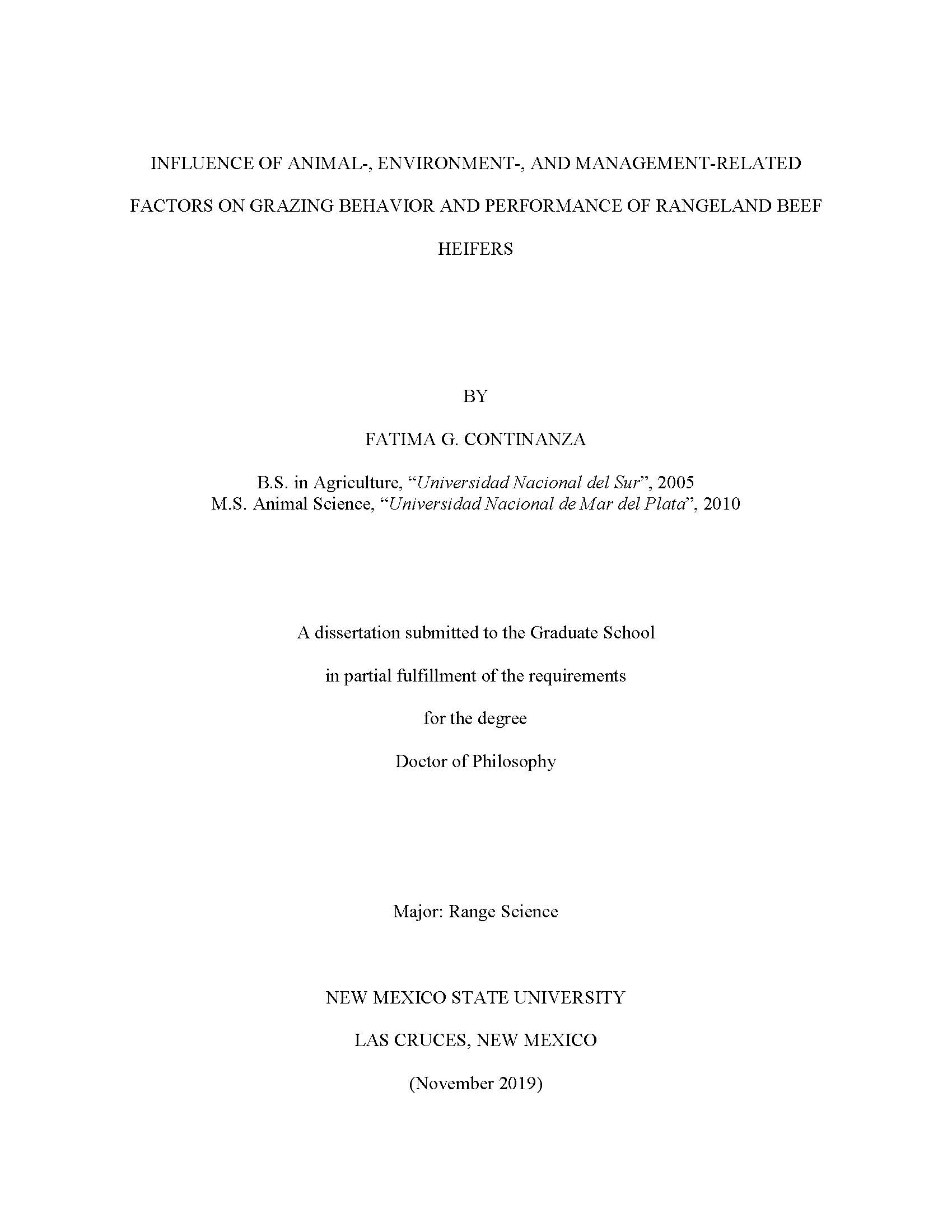Ver ítem
- xmlui.general.dspace_homeCentros Regionales y EEAsCentro Regional Buenos Aires SurEEA BalcarceTesisxmlui.ArtifactBrowser.ItemViewer.trail
Influence of animal-, environment-, and management-related factors on grazing behavior and performance of rangeland beef heifers
Resumen
Three different studies were carried out at the USDA-ARS Fort Keogh Livestock and Range Research Laboratory in Miles City, MT to evaluate the influence of animal-, environment-, and management-related factors on grazing behavior and performance of rangeland beef heifers. In the first study, I evaluated the influence of post-weaning development method and the dam’s lifelong feeding regime on rangeland grazing patterns of beef heifers during winter. I
[ver mas...]
Three different studies were carried out at the USDA-ARS Fort Keogh Livestock and Range Research Laboratory in Miles City, MT to evaluate the influence of animal-, environment-, and management-related factors on grazing behavior and performance of rangeland beef heifers. In the first study, I evaluated the influence of post-weaning development method and the dam’s lifelong feeding regime on rangeland grazing patterns of beef heifers during winter. I compared behavior of heifers wintered on rangeland (group-fed cake, GFC or self-fed protein, SFP supplements) whose mothers were supplemented during the last third of their gestation period with an adequate (CT) or marginal (MG) level of protein to meet their nutrient requirements. I found that post-weaning development protocols modified movement and vi activity of heifers during winter. Restricted feeding of dams during the last third of their gestation period appeared to not affect the behavior of the offspring when conditions during the post-weaning development met the nutrient requirements of the heifers. In the second study, I evaluated the influence of post-weaning development method on rangeland grazing patterns of beef heifers during early and late spring. I compared behavior of heifers wintered on rangeland (GFC or SFP) or in a pen where they were (pen fed silage, PFS). I found that post-weaning development protocols modified movement, activity, and habitat use of heifers during early spring. Initial animal state and/or metabolic memory may have been responsible for the differences observed. Such differences, however, were possibly attenuated through time by social facilitation. In the third study, I compared the precision of two methods of estimating activity of rangeland heifers monitored with collars equipped with GPS (Global Positioning System) and motion sensors. I found that GPS alone (vs. GPS + motion sensors) might be a reliable method to estimate activities within certain limits, but software adjustments are necessary to reduce the bias. Also, further research to estimate activities using different breeds and ages (heifers vs. mature cows) of cattle on different rangeland types, as well as additional validation is needed to determinate whether these results can be generalized.
[Cerrar]

Director de Tesis
Descripción
Tesis para obtener el grado de Doctor of Philosophy, presentada en la New Mexico State University (Estados Unidos), en noviembre de 2019.
Fecha
2019-11
Editorial
New Mexico State University (Estados Unidos)
Formato
pdf
Tipo de documento
tesis doctoral
Palabras Claves
Derechos de acceso
Abierto
 Excepto donde se diga explicitamente, este item se publica bajo la siguiente descripción: Creative Commons Attribution-NonCommercial-ShareAlike 2.5 Unported (CC BY-NC-SA 2.5)
Excepto donde se diga explicitamente, este item se publica bajo la siguiente descripción: Creative Commons Attribution-NonCommercial-ShareAlike 2.5 Unported (CC BY-NC-SA 2.5)


